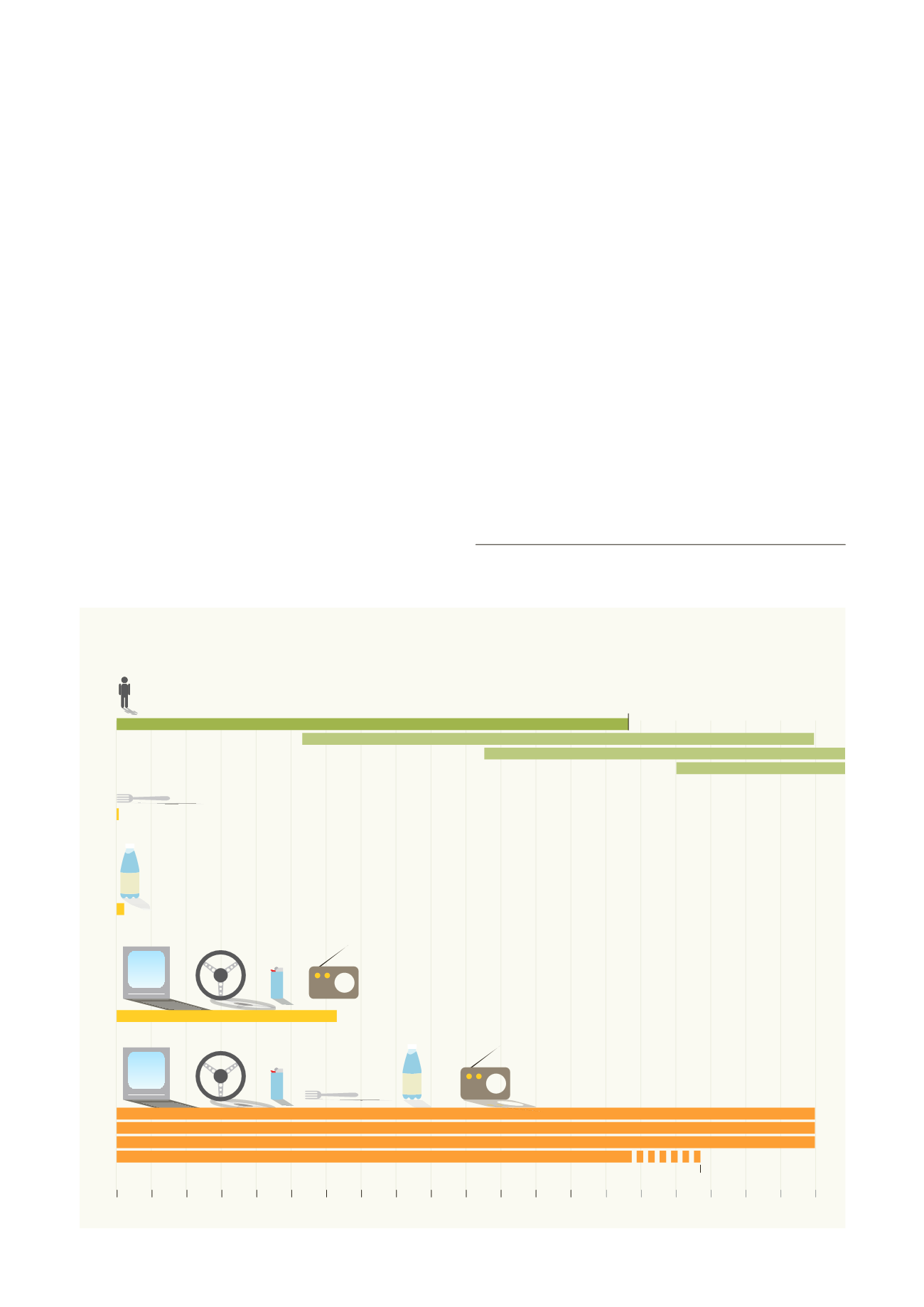

6
Marine Litter
Vital Graphics
Marine litter (or debris)* is waste created by humans that has been discharged into
the coastal or marine environment. It is defined as“any anthropogenic, manufactured,
or processed solid material (regardless of size) discarded, disposed of, or abandoned
in the environment, including all materials discarded into the sea, on the shore, or
brought indirectly to the sea by rivers, sewage, storm water, waves, or winds” (UNEP
and NOAA, 2012).
DEFINITIONS
Just as human activities are varied and widespread, so are
the sources of litter. The sources may be located directly at
sea, on the coast or further inland. Litter can be transported
over long distances and into all marine habitats – from the
surf zone all the way to remote mid-oceanic gyres and the
deep sea floor. Like other pollutants, marine litter affects
habitats, ecological function and the health of organisms
of the ecosystems where it accumulates.
*The terms litter and debris are considered to have the same meaning in
this report and are used interchangeably throughout.
Any human-made object that does not naturally degrade
within days or months can potentially become marine
litter if it is not properly managed. Common litter items
are made of paper, wood, textiles, metal, glass, ceramics,
rubber and plastic discarded by humans (UNEP, 2005).
What is marine litter and why
it is of concern
Are most of the plastics produced still around? Average human life expectancy Use lifespan of short-lived plastic products Use lifespan of single use plastic products Use lifespan of long-lived plastic products Estimated time range for plastic degradation in the marine environment ca 70 years few weeks to few years few minutes to few days ca 30 years Hundreds to thousands of years 0 10 20 30 40 50 60 70 80 90 100 2 nd generation 3 rd generation 4 th generation Source: Barnes, D. K., et al., Accumulation and fragmentation of plastic debris in global environments, Biological Sciences

















